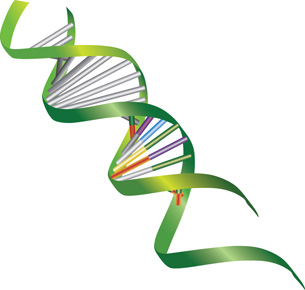Module 7
1. Module 7
Module 7—Molecular Genetics: DNA, RNA, and Protein Synthesis
Introduction

© Colour/shutterstock
Mendel never had the opportunity to look through a microscope. He never observed cells or their structures. The use of a microscope and the discovery of cell nuclei and DNA occurred much later in history. In this module, you will learn about the historical events that led to the discovery of DNA and its structure. You will learn how this amazingly simple and yet complicated structure can code for genetic traits, make copies of itself, and direct the synthesis of protein (the major component of so many body parts, like the hormones you learned about in Unit A, and enzymes).
There are enzymes that can clip DNA apart, and enzymes that put it back together in a new way. You will explore this source of variation and its application in various technologies that can have societal, economic, and environmental implications. Furthermore, DNA has the tendency to stay the same, and yet it changes. These changes are random and can result in abnormalities. They can also provide a source of variation that is the basis for evolution.
You can trace relationships between organisms of different species by comparing their genetic material. The field of genetic technology is rapidly developing many ways to alter genetic traits and treat genetic diseases by applying our understanding of DNA. These technologies often go hand-in-hand with current societal, medical, and ethical issues. You will have the opportunity to examine some of these issues.

© Bojana/shutterstock
In this module you will explore the following inquiry question:
- Can the transmission of traits at the molecular level be explained by understanding the structure of DNA, its role in protein synthesis, and how it could mutate?
As you complete this last module in Unit C, you are reminded about The Key and Student Notes and Problems Workbook: Biology 30 that were recommended to you for additional support towards your success. Information about these resources was provided in the Biology 30 Course Introduction. The key to success in genetics is practice. These multiple-choice, numerical-response, and written-response questions from past Diploma Exams are useful practice tools.